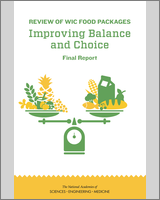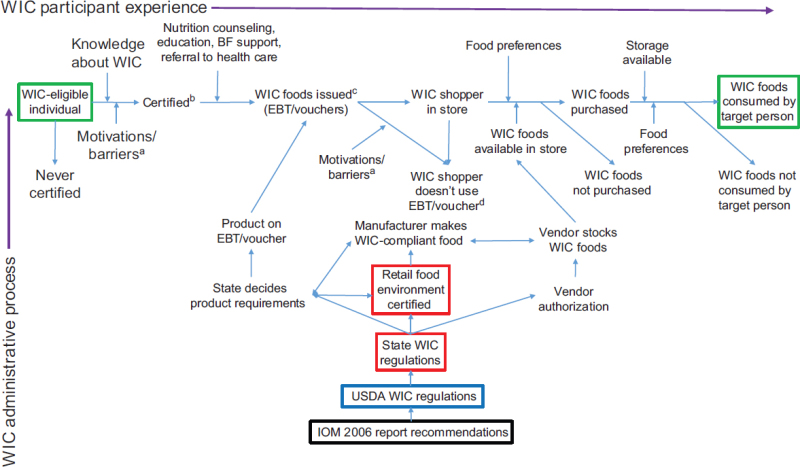From: 2, The WIC Program: Changes Since the Last Review and Continuing Challenges
NCBI Bookshelf. A service of the National Library of Medicine, National Institutes of Health.
National Academies of Sciences, Engineering, and Medicine; Health and Medicine Division; Food and Nutrition Board; Committee to Review WIC Food Packages. Review of WIC Food Packages: Improving Balance and Choice: Final Report. Washington (DC): National Academies Press (US); 2017 May 1.

Review of WIC Food Packages: Improving Balance and Choice: Final Report.
Show details
FIGURE 2-6Overview of the WIC program administrative and participant processes
Legislative mandates may also affect WIC regulations.
NOTES: This figure is a theoretical representation; it does not consider effects of other individual or household resources.
a Potential participant barriers may include lack of access to transportation to the WIC site and/or the vendor, time required to visit a WIC site, inconvenient WIC clinic hours, lack of knowledge about the program, or lack of preference for WIC foods, among other barriers.
b Certification for WIC requires the individual to be categorically eligible (pregnant, postpartum woman, infant, child up to age 5), meet income eligibility guidelines (<185 percent of the federal poverty level), provide proof of residence in the state where benefits are issued and have a nutritional risk. Women certified during pregnancy are certified for the duration of pregnancy plus up to 6 weeks postpartum. Postpartum recertification following the birth of the infant is for either 6 months (if not breastfeeding) or 12 months (if breastfeeding), after which time the mother is no longer eligible for WIC. In the case of a fetal or pregnancy loss, women remain eligible and can be recertified for the program for 6 months after the end of the pregnancy. Beginning in 2013, the Federal Rule gave states the discretion to certify infants and children for either a 6- or 12-month period (USDA/FNS, 2015b). As of this writing, certification periods for infants and children are 6 or 12 months depending on state-level decisions. The need for the participant to visit the program site for recertification is not illustrated in this diagram.
c EBT benefits/food vouchers are valid for a 1-month period. States have the discretion to decide whether the 1-month benefit period is a calendar month (e.g., June 1–30) or a rolling month based on the date of benefit issuance (e.g., June 20–July 19). For an individual who is certified, up-to-date on all required documentation, and has no high-risk conditions, benefits can be issued for up to a 3-month period. This means that, although WIC foods are issued for a 1-month period, a participant may be issued up to 3 months of benefits at one visit. Only the current month of benefits can be used immediately. The remaining benefits issued for use in future month(s) must be retained and used only in the future month(s). Valid dates for future month benefits are printed on the voucher or included on the EBT receipt. The need for the participant to visit the program site to obtain EBT benefits/food vouchers is not illustrated in this diagram.
d Significant lack of redemption or under-redemption of a WIC food is information used by WIC state agencies to make decisions about available products. This feedback loop is not represented in this diagram.
- FIGURE 2-6, Overview of the WIC program administrative and participant processes...FIGURE 2-6, Overview of the WIC program administrative and participant processes - Review of WIC Food Packages
- MAG: Bacillota bacterium isolate D-60_MAG_7, whole genome shotgun sequencing pro...MAG: Bacillota bacterium isolate D-60_MAG_7, whole genome shotgun sequencing projectgi|2799129532|gb|JBGZCB000000000.1| B010000000Nucleotide
- PREDICTED: Macrobrachium nipponense mitochondrial carnitine/acylcarnitine carrie...PREDICTED: Macrobrachium nipponense mitochondrial carnitine/acylcarnitine carrier protein-like (LOC135216841), mRNAgi|2708661922|ref|XM_064252350.1|Nucleotide
Your browsing activity is empty.
Activity recording is turned off.
See more...